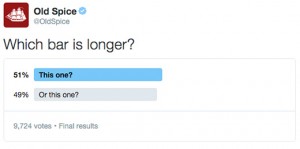— May 7, 2018

This is going to sound strange and a bit counter-intuitive. Opportunity can be an existential threat to an early-stage brand. As odd as that is, it’s true and if not recognized it can be a brand’s quiet killer.
Too many opportunities can be too much of a good thing. It can result in a lack of focus, dilution of effort, and the absorption of available bandwidth. Founders are often confronted with an abundance of choice. The choice of channel, be it conventional grocery, natural, foodservice, or e-comm. The choice of form, a B2B ingredient or a B2C consumer packaged good. Even the choice of category, snack, breakfast food, etc. Choice is an alluring tonic. Its only antidote is discipline and rigor.
Here is where it gets really hard. It could be that many of the choices are attractive business opportunities and the difference between them in both risk and reward can be subtle. So, what do you do? You choose one, and you lean in with everything you’ve got. Like I said, that’s really tough to do. But, it’s an imperative.
You have to pick your swim lane and I will give you 3 simple reasons why that is so important.
1. As a founding team, it’s unlikely that you have the resources, both in time and money, to pursue a bifurcated path to market. Being an entrepreneur is about trade-offs. When you try to spread resources across multiple opportunities it’s unlikely that you will reach the full potential of any of those options.
2. Investors want to see a clear path to a return and a focused plan for making it happen. Sure, it may be nice to show them the other potential revenue streams. But, in my opinion, what they need to see is a clear strategy and a dogged commitment to execute on that strategy.
3. In the strange vernacular of the startup, we talk about burn rate, runway, and capital efficiency. The simultaneous pursuit of multiple options at once is sure to speed the first, shorten the second, and impede the third.
I offered reasons, now let me suggest how to pick your lane and how to move forward. We live in a world where data is king. But to gain entry to that palace is expensive. Often prohibitively expensive. Therefore, I recommend becoming a bit of a mad scientist. It starts with trusting your gut and that of your team. Of course, I encourage you to get input from others. At some point, however, you’ll need to make a decision. Once made, design an experiment and view it as such. Set a timeframe, some KPIs, and go test your hypothesis. For example, if you decide that your best opportunity is to pursue an e-commerce strategy, then determine what needs to happen within the next 90-days to prove that you’ve made the right choice. That should include, metrics such as sales revenue, customer acquisition, and advertising cost of sales. At the end of the 90-days, evaluate. If you’ve proven your hypothesis true, then keep running. If it falls short, take the time to analyze why. Is there a simple tweak that needs to be made or is it a flawed strategy? If it is the latter, move to the next opportunity, rinse, and repeat.
I’ve given you the reasons and the how. Now it’s up to you to pick your swim lane. Don’t allow the abundance of opportunity to be a threat to your business.
Business & Finance Articles on Business 2 Community
(81)








